“The Work We Do” is an interview series that asks creatives with daydream-worthy jobs how they got where they are—and what it’s like to live a day in their shoes.
Today’s interview is with Eva Jorgensen of the letterpress stationary company, Sycamore Street Press. Eva was one of the first people I met “in real life” that I had initially made contact with through blogging (here’s hers). She and her husband, Kirk, were in Brooklyn for the 2010 Renegade Craft Fair and were expecting their first child. We’ve kept in touch ever since (she designed Skyler’s birth announcement) and it’s been incredibly inspiring watching them grow their business (and their family) since that summer.
Give us a little background about your history as an illustrator. When did you start Sycamore Street Press?
My mom is an artist, and I grew up admiring her creations and painting alongside her. After trying out several other more “practical” majors in college, I applied to the art program because I couldn’t not do art. I ended up getting a BFA and MFA in printmaking. I loved the way it walked the line between fine art and graphic arts, and I loved the communal aspect of the printshop. I spent a lot of time in the letterpress studio during grad school and when I finished in 2007, the modern letterpress renaissance was really taking off. I noticed that, and started to wonder about starting my own letterpress stationery company. I brought it up with my dad, who’s an entrepreneur, and he encouraged me and gave me the confidence to go for it.
At first, I thought it would be a little side business, but within six months, it had become a more-than-full-time occupation. I would draw, draw, draw, and then print for days on end—sometimes for as long as twelve hours a day cranking the press back and forth. (My right arm and shoulder got really strong—I loved it.) Six months after that, my husband Kirk and I made the decision that he would join me full-time. It had always been a dream of ours to work together, and we realized that Sycamore Street Press was our way to make that happen.
Can you elaborate on the term “hand drawn life,” that you reference on your website? It’s such a beautiful concept—I’d love to know more about how you embody what it means.
To me, a “hand drawn life” is one that is lived intentionally. It’s edited down to the most important things. It’s full of simple beauty and joys. It’s the kind of life Kirk and I try to lead and create for our kids.
What skills did you have to learn—if any—in order to launch your business?
So many. I had the artistic skills, luckily, having gone through all those years of art school and really honing my drawing style and creative process there. I had passion. I also knew how to work hard, thanks to my parents. But I had absolutely no business skills or knowledge, unless you count the lemonade stands and Girl Scout cookie experiences from my childhood. I had a lot to learn. I still have a lot to learn. But I feel I’ve come a long way, too. Things like branding, trade shows, wholesale, profit and loss, bookkeeping, trademarks, copyrights. The list could go on and on. Looking back, a minor in business or accounting would have been really helpful. And if I’d there would have been a class about how to start a successful stationery business, I could have skipped over a lot of my early mistakes. Speaking of which, I’ll be launching an online course called “Stationery Business 101: Starting Strong” on August 4th, and it’s exactly the kind of thing I wish had been available when I began my company.
Did you always know you wanted to be an illustrator?
I had lots of different ideas—from children’s book illustrator to travel magazine editor to art professor—but it always involved doing something creative.
Take us through a typical day in your work life.
Every day, week, season, and year are different. Over the years, though, I’ve been able to spend a bigger and bigger percentage of my time on the creative end of things. At first, I did everything: shipping, packaging, printing, sales, customer service. Now I’ve handed over all those tasks to other team members, and I focus on the creative—the design, social media and PR, and the big picture stuff. Of course, I still have to spend some time doing administrative tasks, but I’m trying to cut them out and prioritize as much as possible. Time is the most precious commodity.
To give you a rough idea, here’s an outline of a “typical” day at work:
9:30 AM – Get to work. Check in with the team.
9:45 AM – 12:30 PM: Emails, social media, and administrative tasks. My mornings seem to slip away so quickly while working on a bunch of smaller tasks. Sometimes I’ll let all those things slide, though, so that I can get right to work on whatever my big current project is.
12:30 PM – 1 PM: Lunch. I’ve been trying (not always successfully) to take lunch away from my desk.
1 PM – 5 PM: This is my most productive time of day. I try to focus on bigger creative projects: illustrations for new products, a blog post, creating course content, etc. Often, I’ll have one project going myself, while I also go back and forth with Allison, my design assistant, on something we are working on together.
7:30 PM – 10 PM: Once the kids are in bed, I’m back at my desk. Often I’ll pick up where I left off on a bigger project. Other times, I’ll dig into emails, social media, scheduling, or other ongoing tasks.
What are some of the more challenging aspects of your job and how do you navigate them?
If you’ve never owned your own business, you might be surprised at how much work it takes. New entrepreneurs say this over and over again: “I knew it would be a lot of work, but I didn’t realize it would be this much.” Your work becomes your hobby. And that’s okay, because you love it. (At least I do, and you should to, if you’re starting a business!)
If you have kids, you often have to work nights when they are in bed in order to get everything done. If you don’t have kids, it’s easy to end up spending every waking minute working. I know I used to. I always wish I had more time, and that’s something I’ll always struggle with. But being a mother and an entrepreneur has really taught me how to prioritize, and I’m grateful for that.
What advice would you give to someone hoping to do what you do?
Figure out what your aesthetic is, how it’s different from what’s already out there, and then really hone in on that. Having a distinctive style and remaining focused on that will really help you get noticed. Also, know that it’s going to be a lot more work than you ever imagined, and be prepared to let a lot of other things in your life go.
Lastly, what do you love most about what you do?
I love the life that it’s created. Kirk and I get to work together. I take Fridays off to be with my kids (Kirk does the same on Wednesdays). I’m able to surround myself with creative people. It’s not a perfect life, but still, it’s a beautiful life.
I’ll always remember the night Kirk and I decided to take this path. It was Thanksgiving, and we were in Milwaukee for a craft fair, and we were walking through the dark city streets while talking about the future. Kirk was in school for Slavic Linguistics and had been planning on becoming a professor. But we’d really been enjoying working together at Sycamore Street Press, which had been growing, and we realized this might be our chance. I’m so glad we made the leap.
Thanks so much, Eva! It resonates with me that it takes a second love—a truly competing interest (like family)—to force you to learn how to prioritize. Sometimes it would be simpler if it didn’t, wouldn’t it? Thank you for showing us how you work toward a balance. And for the inspiration to take a risk!
Visit Sycamore Street Press. Photos by Jessica Peterson.
Thank you to Shoko Wanger for her help with this series! Read more about the inspiration behind it. Know someone who’d be great for “The Work We Do,” or have a request for a profession you’d love to know more about? Email [email protected].



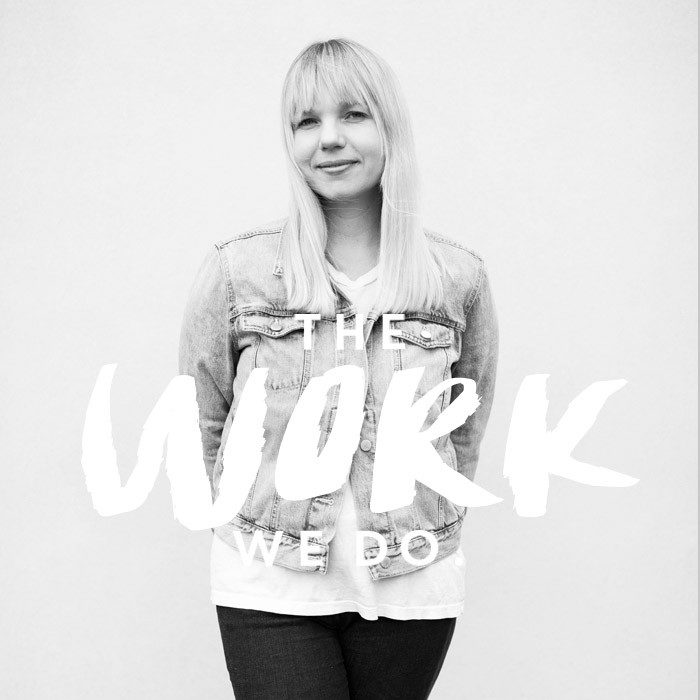
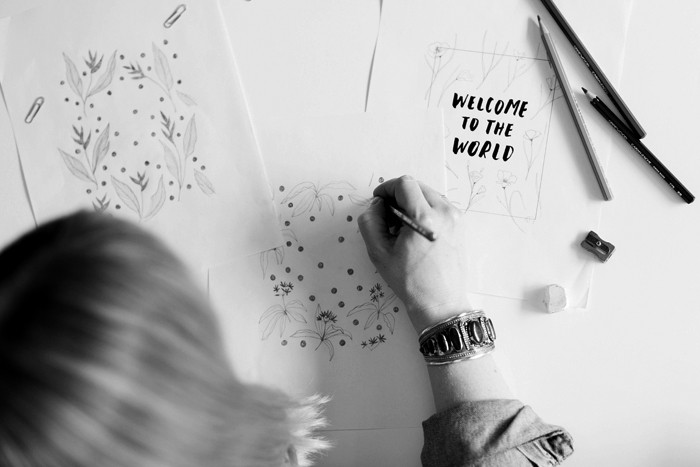
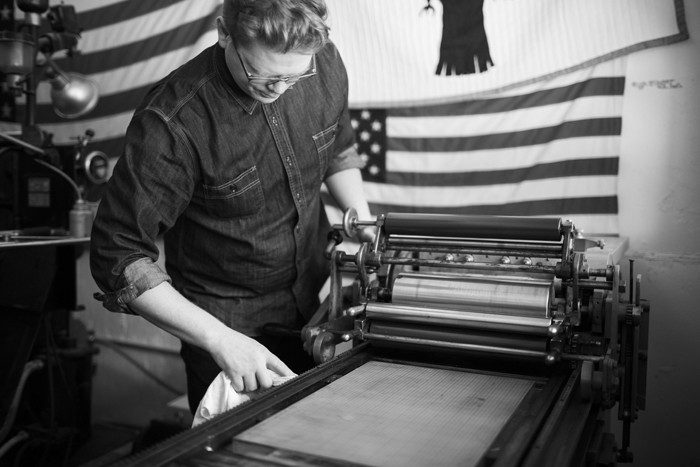

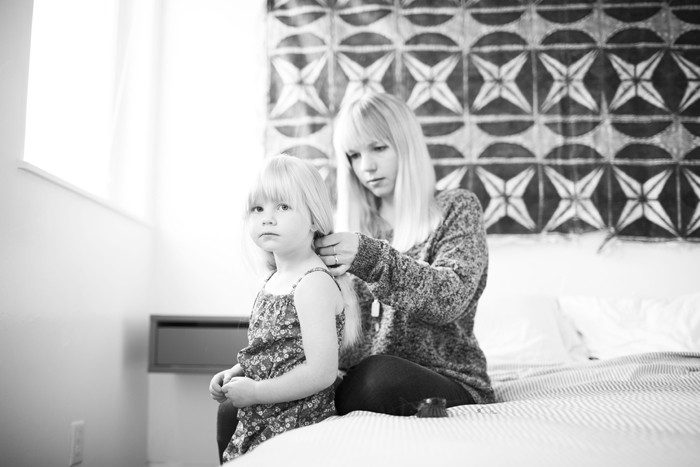


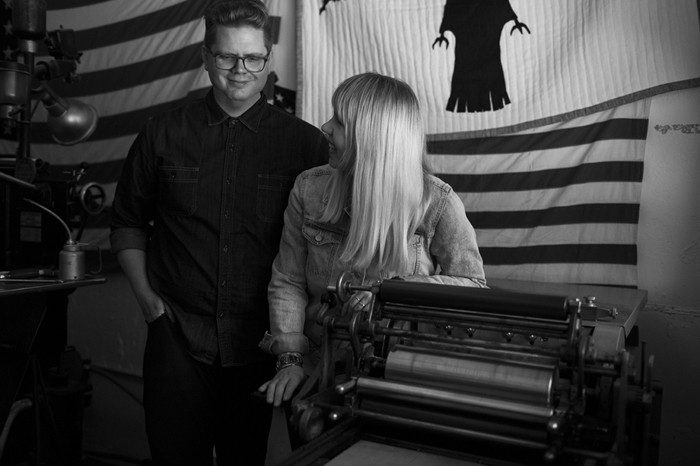
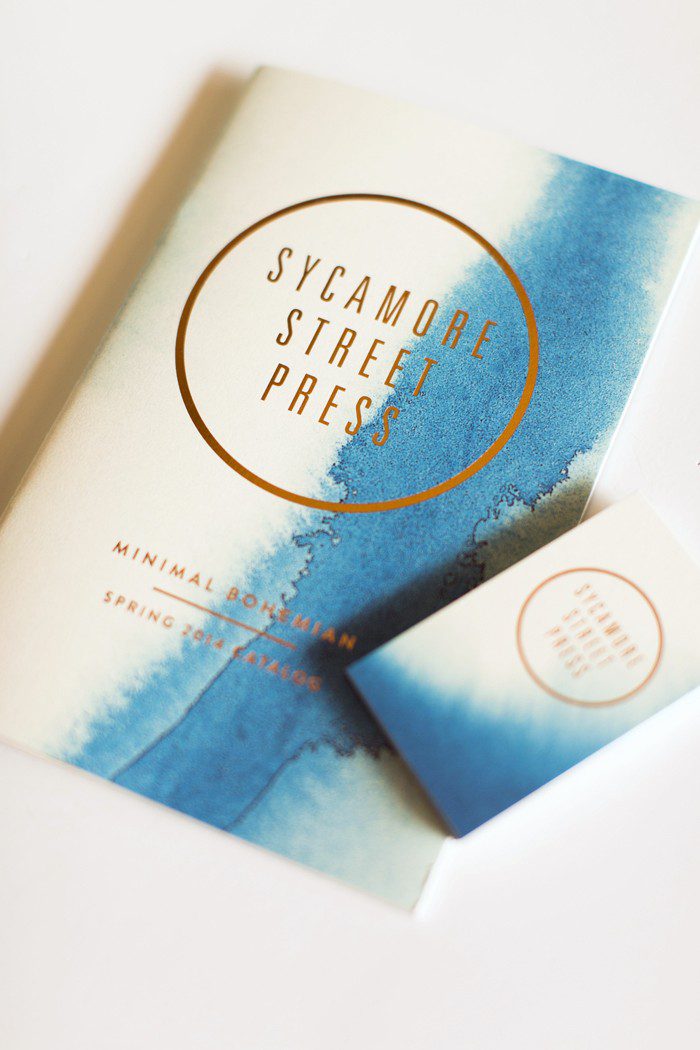


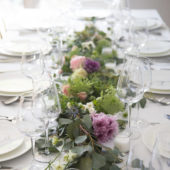
































11 Comments